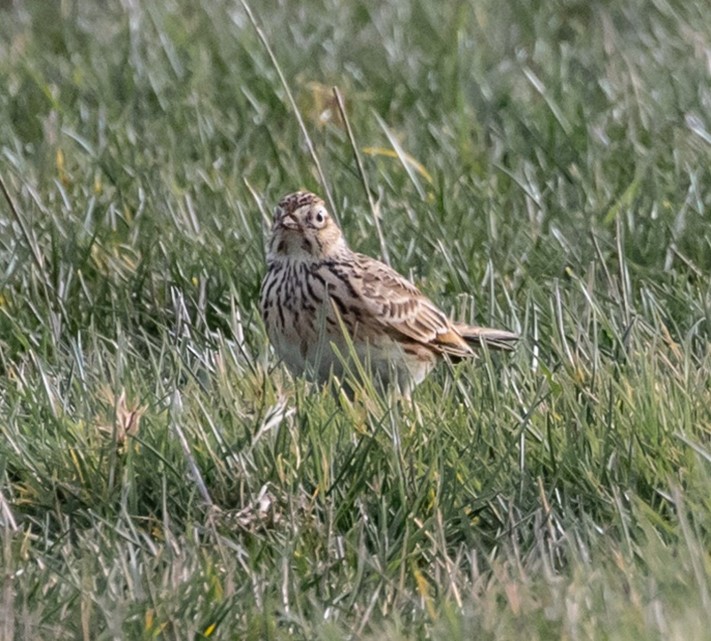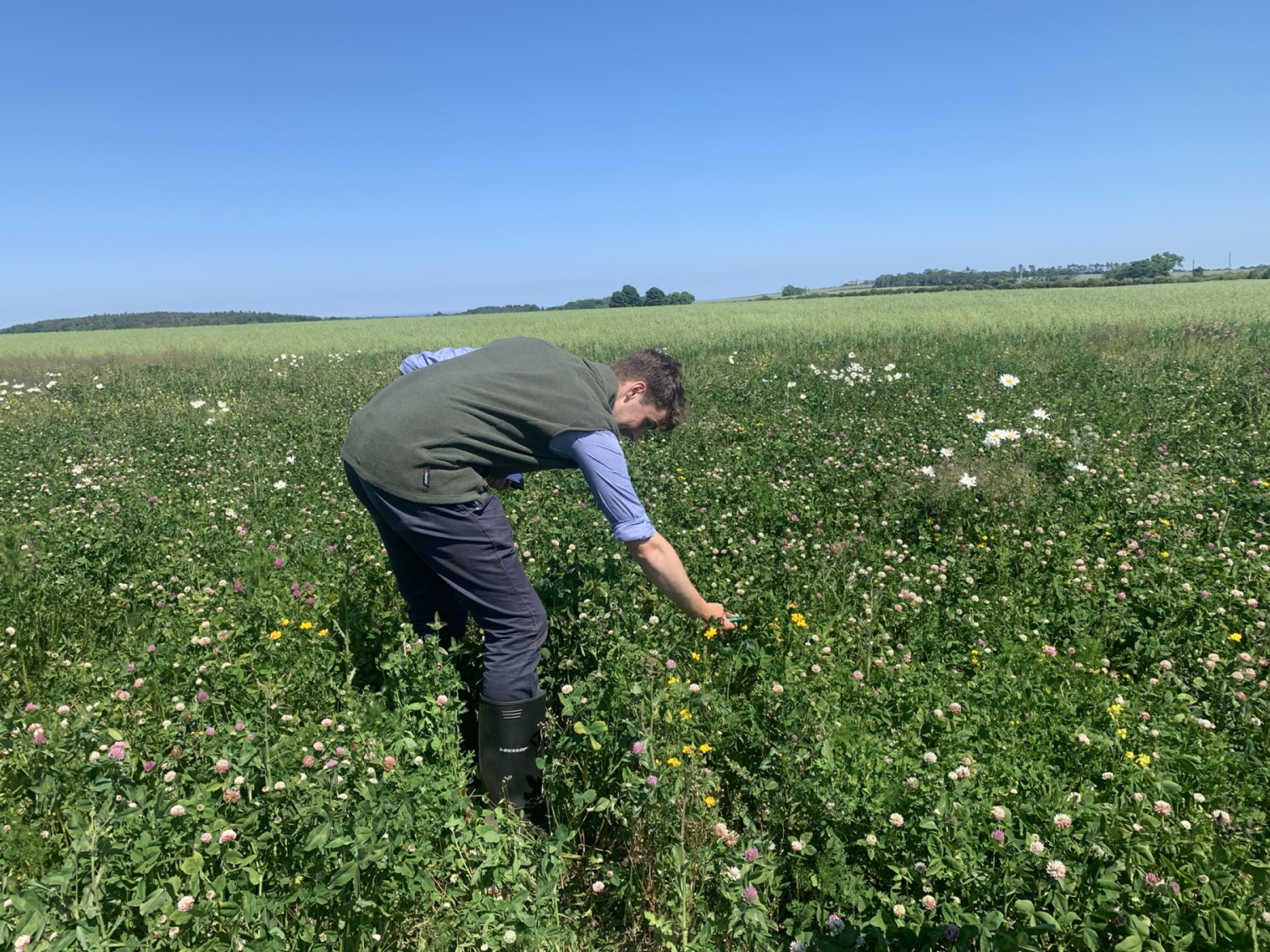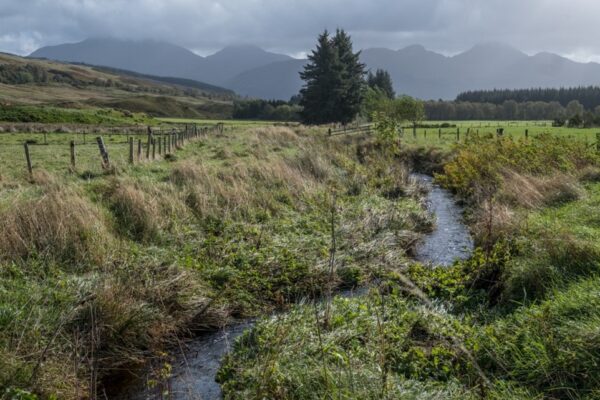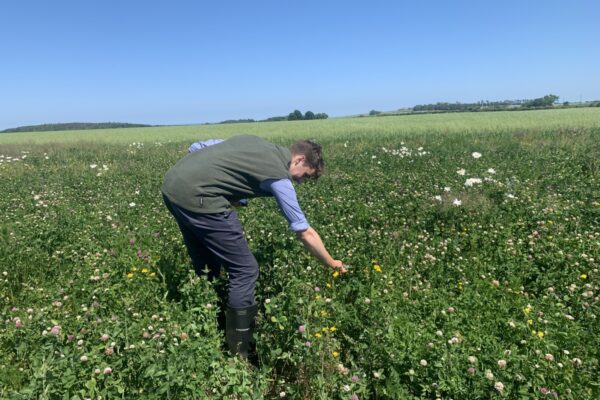Land Management of Blanket Bogs
17 October 2024This practical guide is for everyone who wants to improve the management of blanket bogs and understand these special habitats.
Key Messages
- Recognise the carbon and biodiversity value of bogs.
- Do restore peatlands where possible by raising the water table and ensuring any areas of bare peat can revegetate. This can massively support biodiversity and improve your carbon footprint.
- Do NOT over graze bogs.
- Do NOT create new ditches.
- Do NOT plant trees on peat soils.
- Do NOT carry out burning.
What are blanket bogs?
Blanket bog is a type of peatland found in Scotland and forms over a long time in cool, wet and (usually) oceanic climates. It is generally found on flat or gently sloping ground where drainage is poor, often over acidic bedrock in places where rainfall is high and temperatures are cool which leads to near-constant saturation. In these conditions bog-mosses and cotton grasses don’t break down when they die but slowly accumulate as peat. Layers of peat build up and, fed only by rainwater, the bog becomes increasingly acidic and low in nutrients.
Blanket bog is one of Scotland’s most common semi-natural habitats, covering some 1.8 million hectares – 23% of our land area. Scotland holds a significant amount of the European and world resource of this rare habitat.
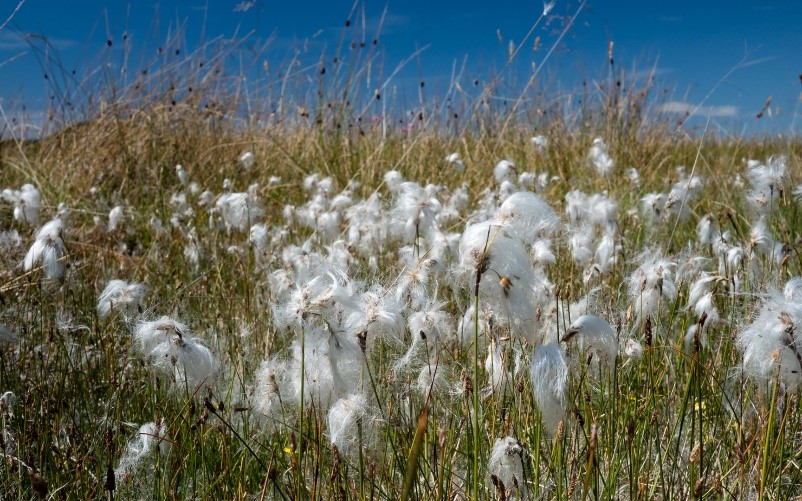
Blanket Bog ©Helen Bibby
Why are they Special?
Blanket bogs in Scotland are a globally important resource that are protected under the “EC Habitats Directive Annex I” and hence are included in the UK Biodiversity Action Plan (UK BAP) as a Prioriry Habitat.
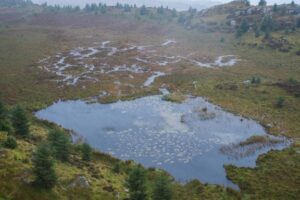
Blanket bogs are particularly important for biodiversity and as a carbon store. As we face both biodiversity and carbon crises, their value is now being widely recognised. Bogs are dominated by a specialised range of plants which thrive in these wet conditions. Species such as Bog Asphodel, Cranberry, Bogbean, Sundew, Bog Myrtle, Cotton Grass and many more thrive here. Sedge-dominated areas are particularly significant for many specialist invertebrates such as the Large Heath Butterfly, Emperor Moths and the Bog Sun-Jumper Spider. Bog pools are very important for species such as Water Beetles and the predatory larva of Black Darter Dragonflies, which eat midge larvae, along with Common Hawker Dragonflies. The habitat is very rich in mosses and liverworts, particularly Sphagnum of which there are 30 different species.
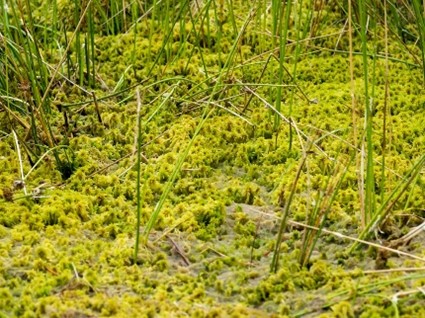

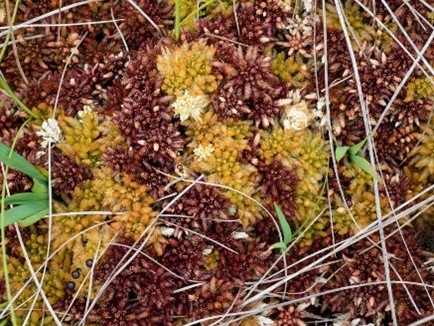
This mosaic of vegetation, sometimes with heather, benefits a range of other species: Golden Plover, Snipe and Dunlin as well as other species that require shelter provided by hollows, ridges, and the vegetation itself. Both Golden Plover and Dunlin breed on Blanket Bog, with Dunlin nesting around the shallow bog pools. Short-eared Owls and Hen Harriers are often seen across large blanket bogs.
As well as being crucial in supporting wildlife, blanket bogs in good condition capture and store large amounts of carbon, helping to mitigate against climate change, and reduce the risk of flooding by slowing down water flow. Peatlands ‘lock in’ an estimated 3.2 billion tonnes in the UK alone, and where peat continues to form this helps to offset the effects of future human activities.
Threats to Scotland’s Blanket bogs
Blanket bogs cover around 1.8 million hectares, equating to 23% of Scotland’s land area. Over 1.6 billion tonnes of carbon are stored in Scottish peatlands – that is a third of the carbon held in the Amazon rainforest which is 250 times larger in area! (Scottish Environment)
Around 80% of UK peatland has been degraded due to human activities which include draining the soil so it is not waterlogged, in order to make it suitable for crop or tree growth leads to the decomposition of plant material and soil shrinkage. This releases carbon into the air and is a source of CO2 emissions into the atmosphere. While it takes 1,000 years for 1m of peat to build up, drainage means the land surface reduces an average of 1cm to 2 cm per year through subsidence due to peat oxidation.
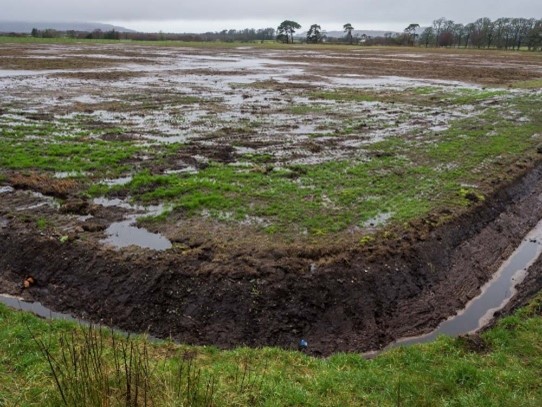
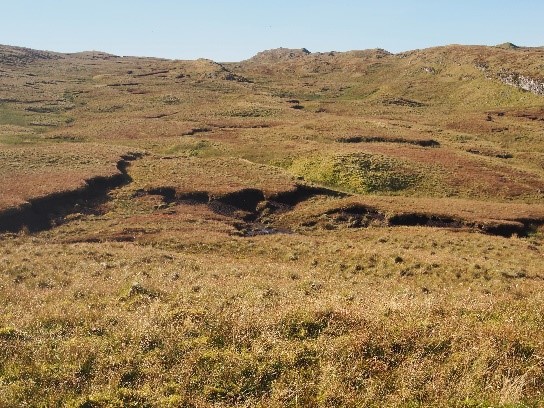
Drains adjacent to an area of raised bog ©Helen Bibby
Hagging on blanket bog ©Helen Bibby
Creation of ditches to enable drainage provides channels for the rapid flow of water from the bog during periods of heavy rainfall, which increases flood risk downstream.
Drying out the peat soil often allows shrubby vegetation to grow, aiding further drying out of the bog. A drier bog is more vulnerable to severe wildfires. Fires also produce CO2 - a major wildfire on peat in the Scottish Flow Country is thought to have doubled Scotland’s greenhouse gas emissions during the six days it was burning.
When peatlands degrade, they act as a source of greenhouse gases and host less biodiversity. Restoring one hectare of drained blanket bog can result in the absorption of around five tonnes of carbon dioxide equivalents per year, so restoring peatlands is a priority for climate change. (Scottish Environment)
Blanket Bog Management
The main aim of blanket bog management is to protect the peatland below the vegetation. Blanket bog does not support high densities of grazing as the nutrition of the bog plants is poor. Blanket bog typically supports 0.25–0.5 sheep (0.037–0.075 lu) per hectare. Further livestock reductions during the winter can help to prevent erosion as the action of animal trampling erodes the peat along the tracks. Always take account of the numbers of Red Deer which may also be grazing the bog area.
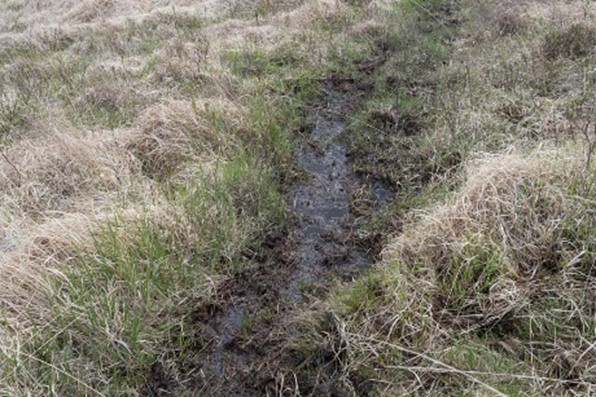
Erosion caused by grazing animals crossing a bog ©Helen Bibby
Where stock graze the heather during the winter it can be damaged to the point where it is replaced by purple moor grass which is of very low grazing or environmental value. Repeated heavy grazing by deer and livestock along with burning that is carried out too frequently can cause large areas of blanket bog to become Molinia dominated. A useful way of assessing the grazing level is to look for grazed shoots of cross-leaved heath. This species is extremely unpalatable and, when grazed, indicates very high grazing pressure and damage to other species.
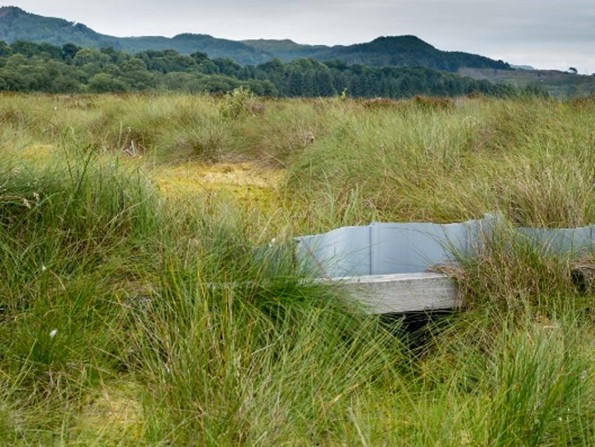
Ditch blocking to hold water on the bog area ©Helen Bibby
Where the bog is already degraded, restoration management can be carried out. This may involve raising the water table on the bog to hold more water by blocking ditches. A higher water table on a bog is essential for new peat formation. A healthy bog should be growing and capturing more carbon, and it can only do this with a high water table. Unfortunately, the majority of the bogs are now degraded and no longer growing. Holding water in bogs also slows waterflow further downstream and can help prevent flooding in other areas.
For further information and help on bog restoration contact Peatland ACTION | NatureScot.
Sign up to the FAS newsletter
Receive updates on news, events and publications from Scotland’s Farm Advisory Service


